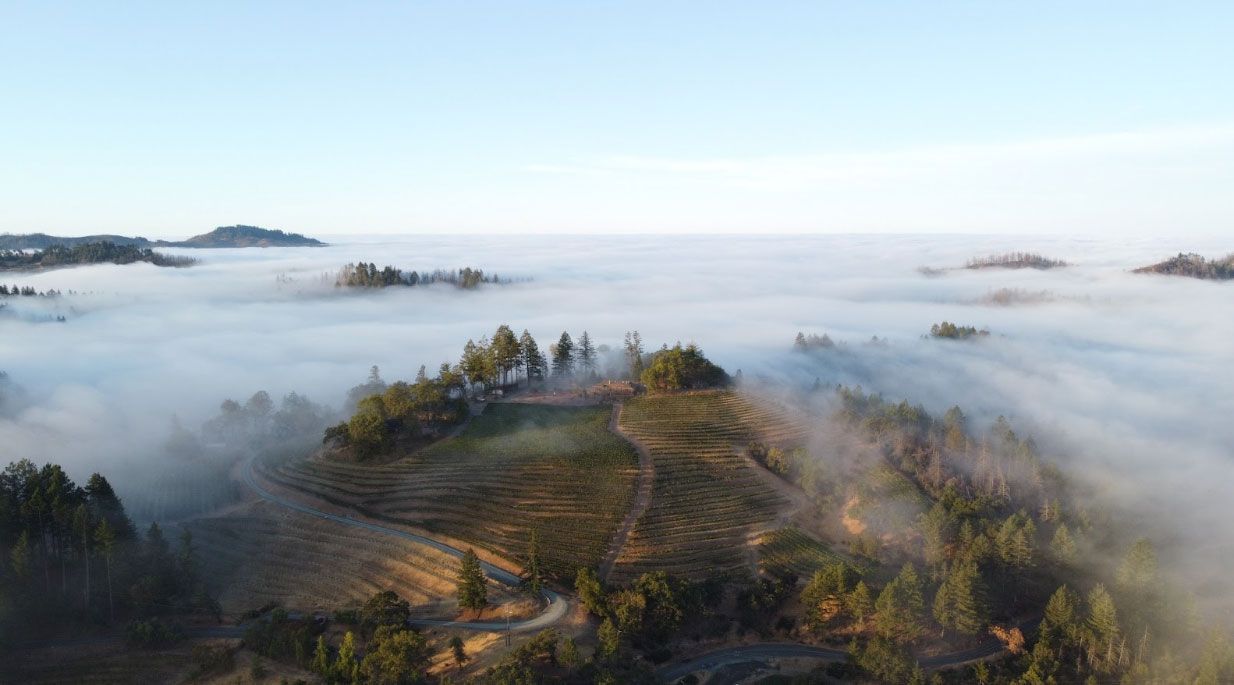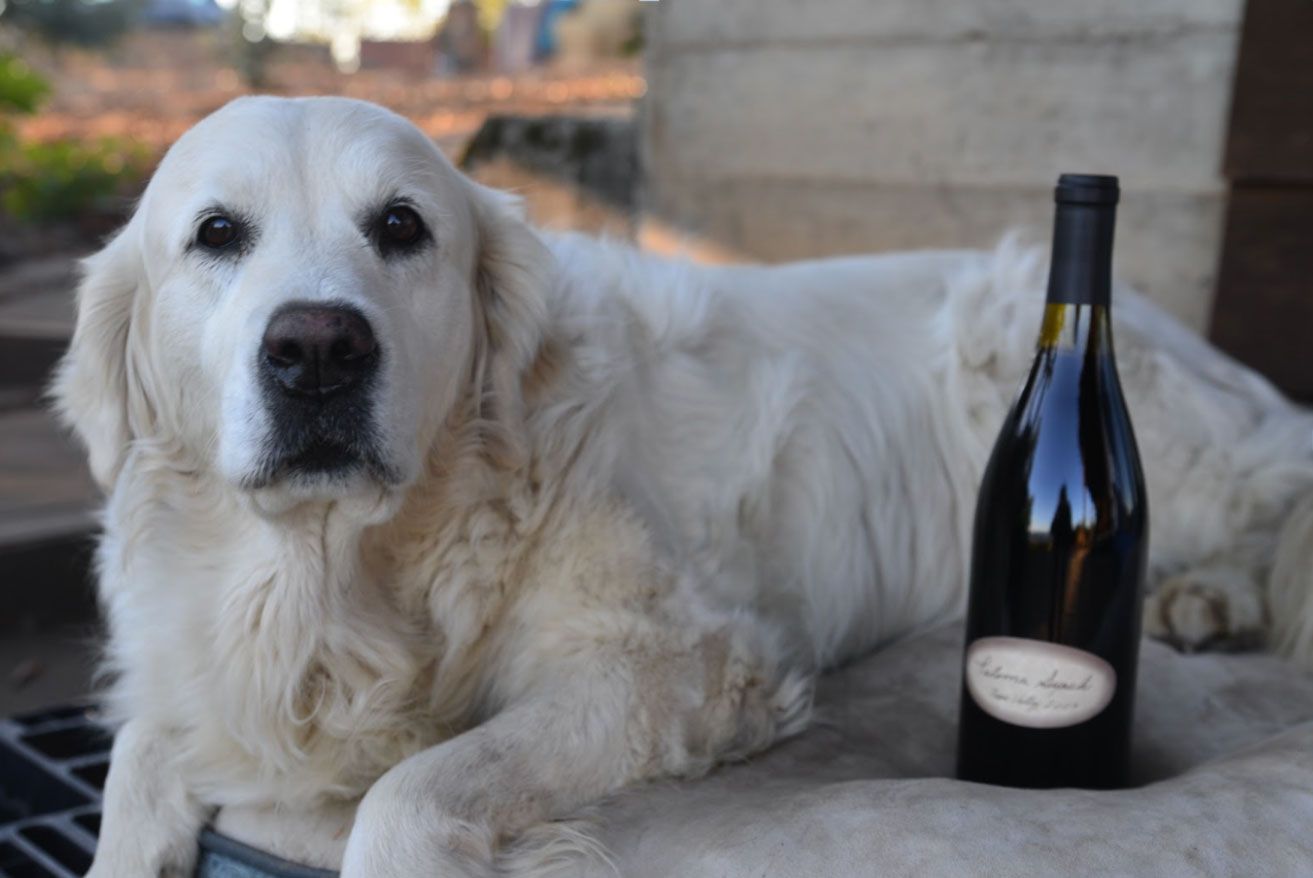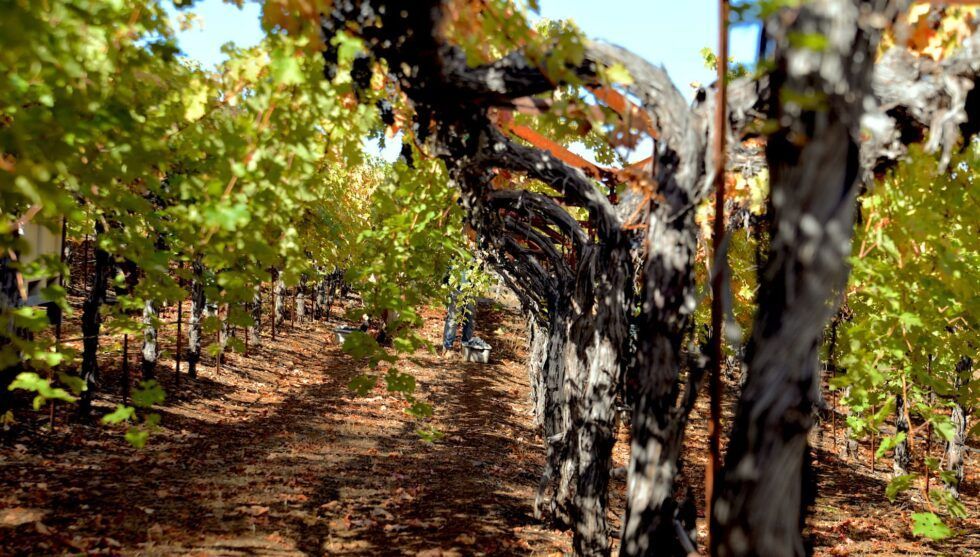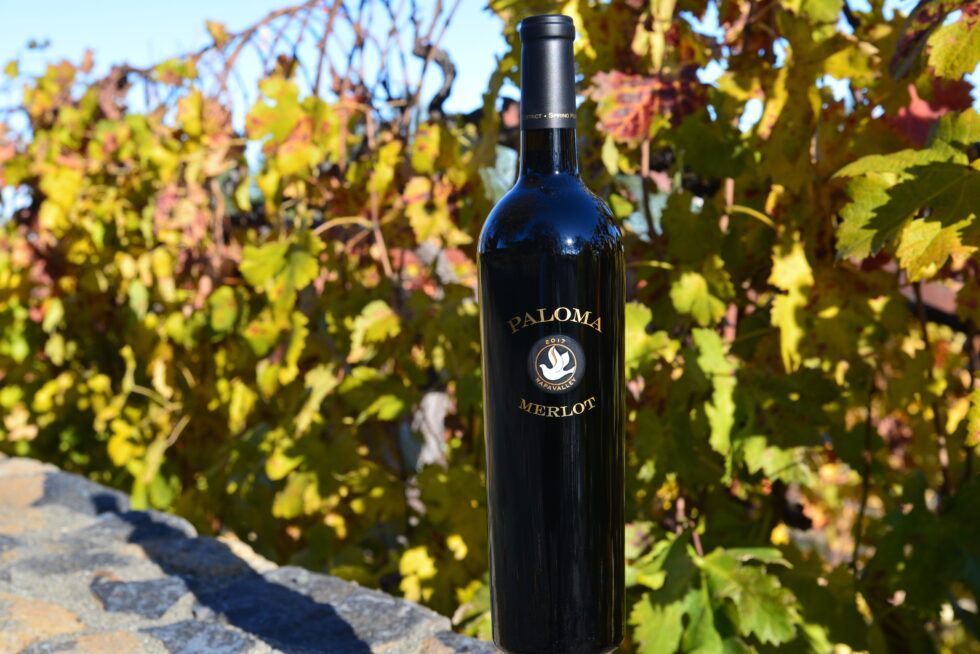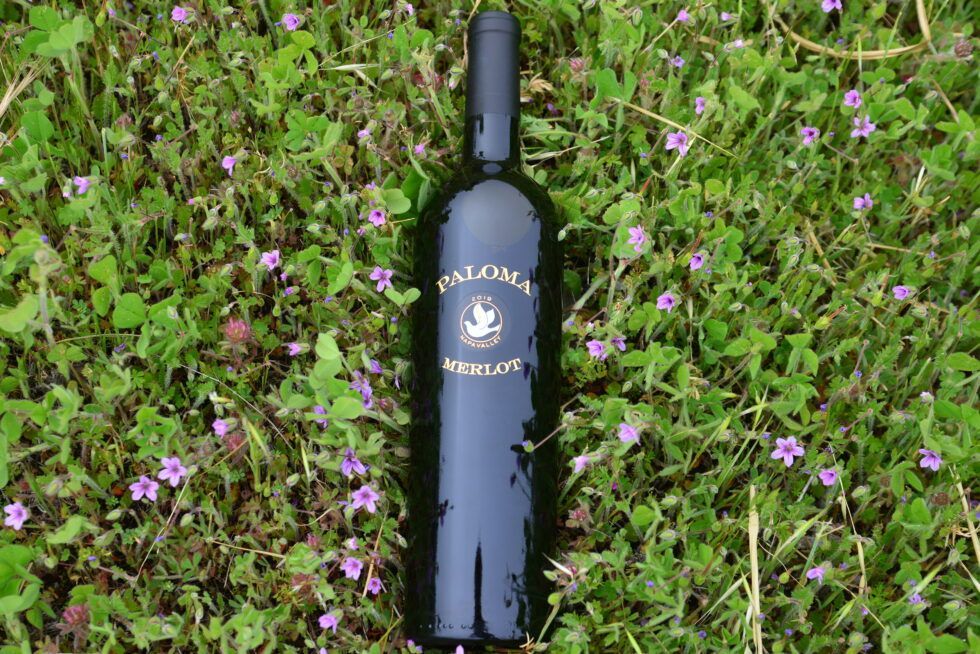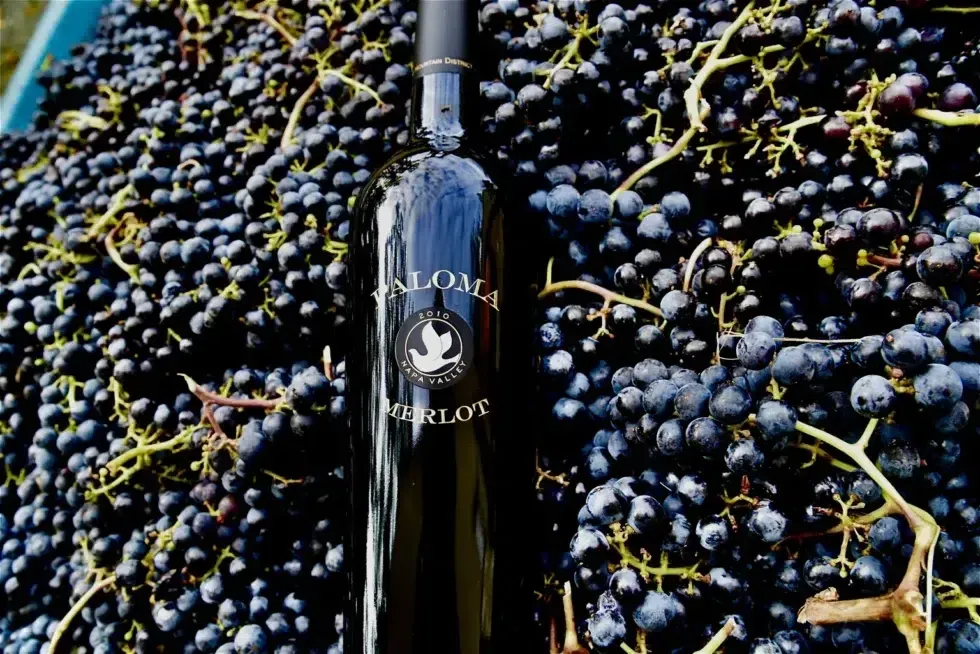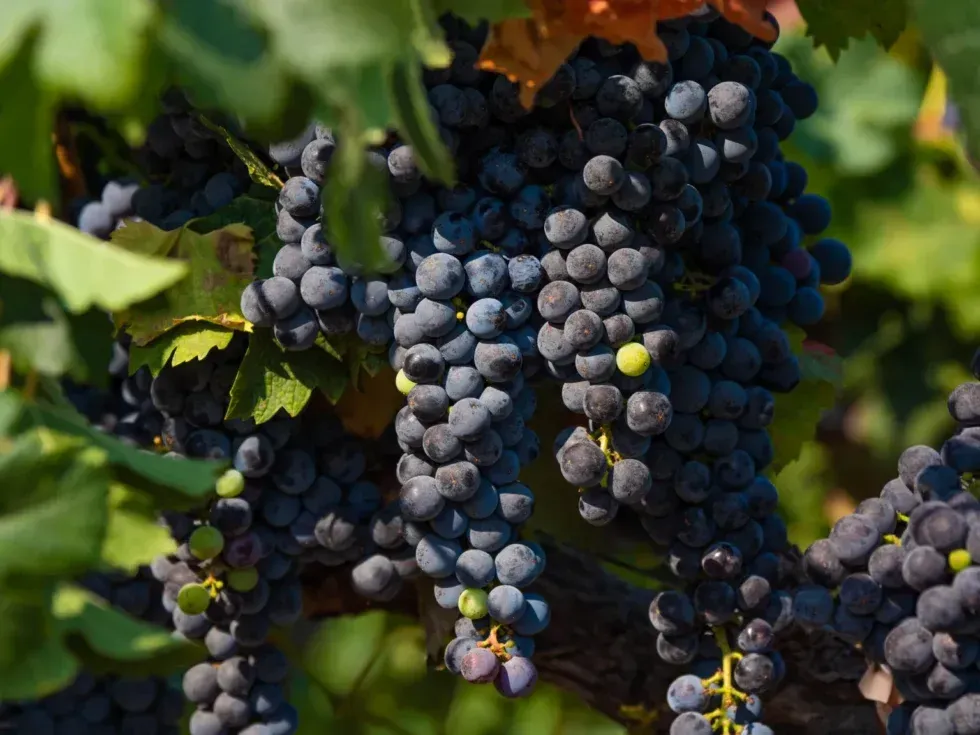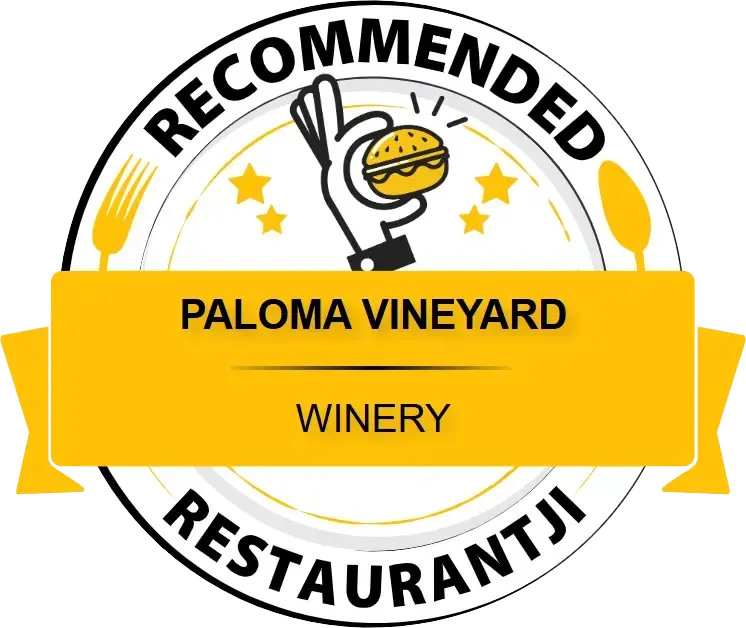The Story Behind Merlot’s Wine Origin and Its Enduring Legacy
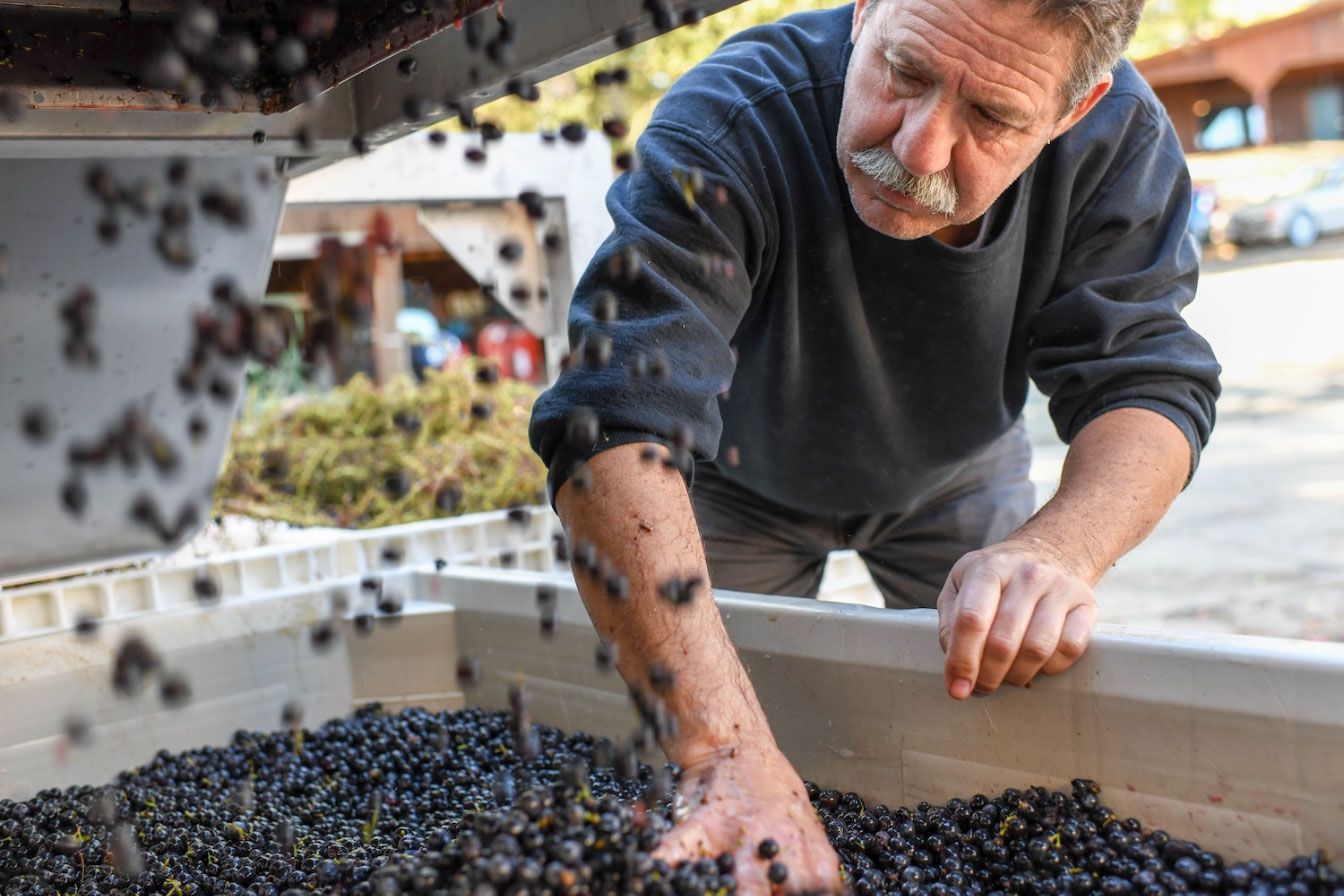
At Paloma, Merlot is the soul of our story. It is the grape that founders Jim & Barbara fell in love with on their journey to Spring Mountain.
Picture this: it’s the late 1970s, and Barbara and Jim are visiting the Duckhorn vineyard, tasting their famed Three Palms Merlot. They lean into a sip and feel stirred—not just by the wine’s richness, but by its quiet elegance.
That moment sparked something. They looked at each other and thought, “This is the wine we want to make. These are grapes we have to grow.” Before they even found the site, they had their hearts set on Merlot.
By the time they found the raw land at the top of Spring Mountain, there was no changing their minds. Back then, planting Merlot at that elevation was almost unheard of—too cool, too risky. But they trusted their instincts and took the leap.

Why Merlot?
Merlot is approachable without being ordinary—velvety and inviting, yet with enough structure to feel thoughtful. It was the wine that welcomed guests into Barbara and Jim’s home, around the dinner table, on chilly nights under mountain stars.
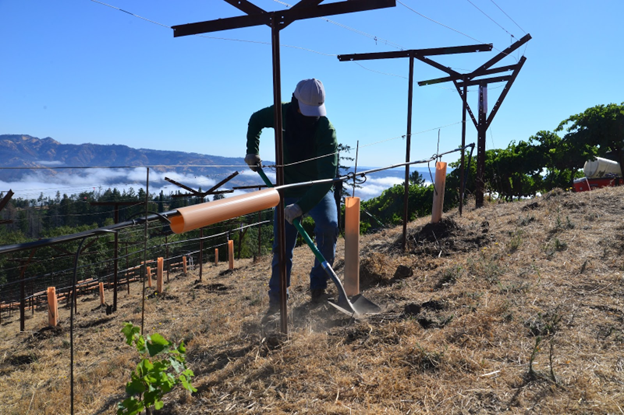
A Tribute to Its Roots
While Merlot’s origin story leads through the storied estates of Bordeaux, where it found a home in Saint-Émilion and Pomerol, Barbara and Jim were guided by a different compass: personal taste and a sense of adventure. They weren’t chasing trends—they were following their hearts, inspired by the elegance of that Duckhorn pour.
Because of their faith in that grape, we now enjoy a Merlot that’s distinctly Paloma: mountain-cooled acidity mingles with rich dark fruit, wrapped in silky tannins. It’s a wine that feels both comforting and curious—like a conversation with an old friend who still surprises you.
There’s a reason Merlot holds a permanent place at the Paloma table—and in the hearts of wine lovers around the world. It’s approachable but never plain. Elegant, but not flashy. It’s a wine that invites you in and asks you to stay awhile. But long before it became the signature varietal of Spring Mountain’s sunlit slopes, Merlot’s journey began in the ancient vineyards of Bordeaux.
Understanding that journey—where Merlot came from, how it earned its reputation, and what it means to us at Paloma—is to better understand the wine in your glass. So let’s begin where all great stories do: at the roots.
What is Merlot Wine?
Merlot is a red grape that crafts wines known for their generous fruit character and soft, silky texture. It typically falls somewhere between medium and full-bodied, with gentle tannins and flavors that stretch from bright cherry and raspberry to the darker depths of plum and blackberry. Depending on where it’s grown, you might also taste whispers of chocolate, tobacco, herbs, or cedar.
It’s one of the most widely planted grapes in the world—and oddly, one of the most underestimated. It’s sometimes brushed off as too easy, too friendly. But at Paloma, we believe that ease is part of its brilliance. For many of our visitors, Merlot is the wine that opened the door to the world of reds. It’s the one they return to time and again.
Tracing the Origin: Where Does Merlot Come From?
Merlot in Bordeaux: The Birthplace of a Global Varietal
Merlot’s first mention goes all the way back to the 1780s in Bordeaux, France—specifically, the Right Bank area around Libourne. It was there, in the clay-heavy soils and sea-kissed air, that Merlot truly took root.
In regions like Pomerol, Merlot showed it could ripen earlier than Cabernet Sauvignon, giving it a leg up in years when rain or chill threatened harvests. Estates like Château Pétrus proved just how powerful, age-worthy, and elegant Merlot could be. It didn’t take long before the grape was embraced across France—for both blending and solo acts.
Understanding Merlot Grapes
We didn’t always know Merlot’s full family tree. It wasn’t until the late 1990s that DNA sleuthing revealed it to be a cross between Cabernet Franc and an almost-forgotten grape called Magdeleine Noire des Charentes. Suddenly, its silky texture and early ripening made more sense—it had inherited the best of both parents.
One of Merlot’s greatest strengths is its adaptability. It wears many faces depending on where it grows. In cooler spots, it leans into earthy and herbal tones. In warmer places, it becomes lusher, more fruit-forward. But wherever it is, Merlot seems to find a balance that’s quietly compelling.
Merlot’s Legacy: From Old World Roots to Modern Elegance
French Merlot vs. Napa Valley Merlot
French and Napa Merlot each have their own rhythm. On the Right Bank of Bordeaux, you’ll find structure and savoriness, often bolstered by Cabernet Franc, such as Pomerol. It’s refined, with a hint of formality.
Here on Spring Mountain, Merlot receives more sunshine. The elevation keeps the wine bright and fresh, while our mountain sun brings out fruit forward, concentrated fruit. At Paloma, we don’t try to tame that—we let Merlot be bold and expressive with its aromatics, while still holding on to its finesse. It’s a style that feels both classic and uniquely ours.
Merlot's Characteristics: Taste, Texture, and Versatility
When people say Merlot is “velvety,” they’re not exaggerating. Its tannins are softer than Cabernet’s, giving it a round, smooth mouthfeel that’s easy to love. But that doesn’t mean it’s simple.
You’ll find layers of fruit—black plum, raspberry, cherry, floral—often wrapped in notes of cocoa, vanilla, or bay leaf depending on how it’s aged. As it matures, Merlot can take on beautiful secondary notes: dried fruits, savory herbs, and even a hint of hushed heady floral notes.
Pairing Merlot with Current Culinary Trends
Merlot’s friendly nature makes it a dream at the dinner table. Some of our current favorite pairings at Paloma include:
- Mushroom risotto – earthy richness meets savory herbal notes
- Herb-crusted lamb chops – the wine’s structure helps tenderize the meat
- Charred eggplant with tahini – smoky and bright, a fun contrast
- Pork Sliders with Tomato Chutney and Grilled Yams–the herbs on the pork bring out the herbaceous characteristics in the wine
Merlot Wine Tasting: From Bordeaux to Spring Mountain
Tasting Merlot from different regions is like hearing your favorite song played in two different styles—each one brings something new to the table.
A vertical tasting of Paloma Merlot tells our story year by year: the vibrant lift of 1999, the spice of 2004, the silky grace of 2006. Each vintage reflects the season, the soil, and the hands that tended it.
Line that up with a Bordeaux Merlot, and you’ll taste the contrast. Where Bordeaux might offer graphite and forest floor, Paloma delivers sun-warmed berries and lavender. It’s not about which is better—it’s about the richness of perspective.
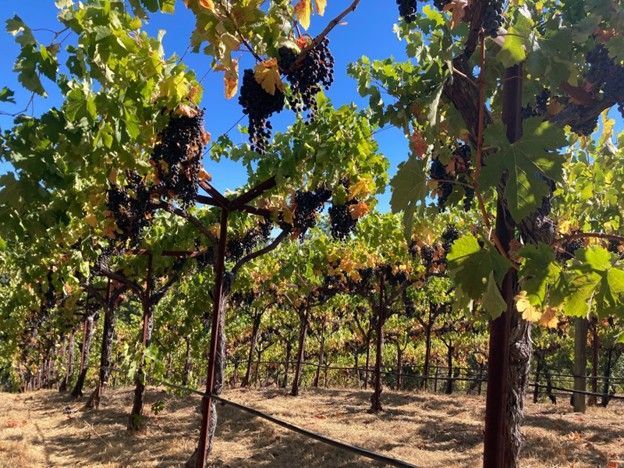
How American Winemaking Shaped Merlot
Merlot caught on big in the U.S. during the 1970s and 1980s. California winemakers were drawn to its roundness, its fruit, its charm. By the early 2000s, it was everywhere.
Then, Sideways happened.
One throwaway line from that 2004 movie sent Merlot into a tailspin. Sales dipped. Reputation took a hit. But here’s the twist: while mass-produced Merlot suffered, small producers—those who already cared deeply—kept going. The spotlight faded, but the quality stayed.
At Paloma, we never wavered. We didn’t plant Merlot because it was trendy—we planted it because we loved it. We saw its potential here on our mountain site, and we committed to doing it right. Turns out, it was one of our best decisions.
Today, Merlot is having a quiet comeback. People are remembering why they loved it in the first place: it’s elegant, adaptable, and endlessly rewarding in the hands of winemakers who treat it with respect.
Misconceptions About Merlot: Separating Myth from Magic
Merlot’s reputation took some unfair hits over the years. Some called it boring. Others dismissed it as a beginner’s wine. But the truth is, Merlot has never stopped being great—it was just misunderstood.
The idea that it’s simple? Only if it’s poorly made. Great Merlot shows depth, structure, and the kind of balance that makes it age with grace. At Paloma, our mountain-grown Merlot speaks clearly of its place—smooth, dark fruit, fine tannins that stretch out over time.
And the notion that Merlot is only for blending? That sells it short. Yes, it plays a beautiful role in Bordeaux blends, but it’s also a star in its own right. The best examples—ours included—stand tall and proud, without needing backup.
Merlot has weathered a lot. It’s gone through phases, faced criticism, and kept quietly winning hearts. And that resilience is part of its charm. It’s the wine that doesn’t shout, but always shows up.
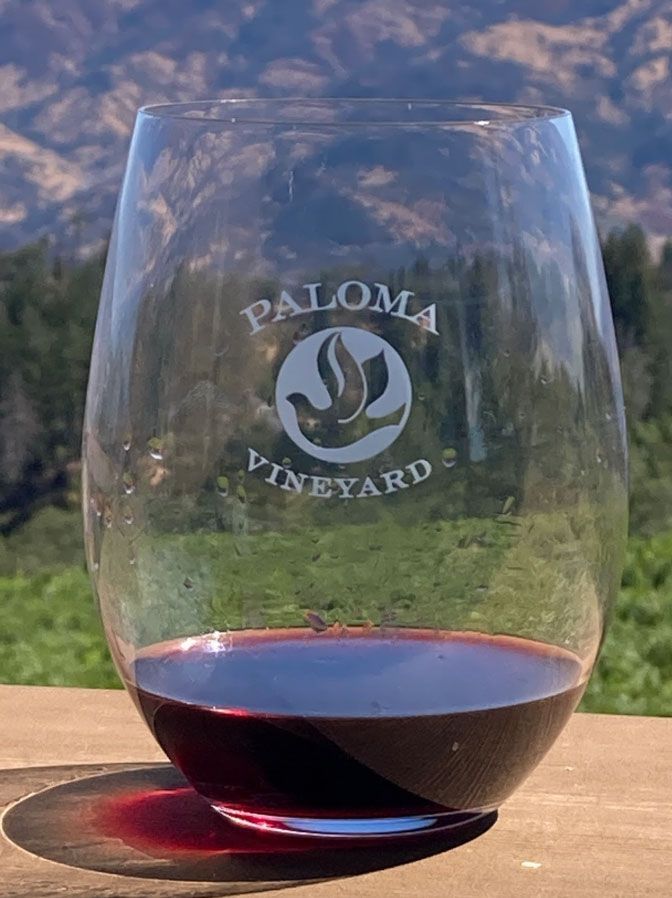
Merlot at Paloma: Our Signature, Our Story
For us, Merlot is more than a grape—it’s family. It brought Paloma national attention. It’s been with us through joyful harvests and tough vintages, through laughter, late nights, and long meals shared with friends.
Every bottle of Paloma Merlot carries that story. You’ll taste our mountain soil, our small-lot winemaking, our belief in doing things with care. You’ll taste Barbara and Jim’s leap of faith.
So next time you pour a glass, pause for a moment. Think about the centuries of history behind this grape. Think about the people who nurtured it, and the conversations it’s sparked around dinner tables.
Because Merlot isn’t just a wine—it’s a thread connecting past and present, people and place. And we’re honored to share it with you.
